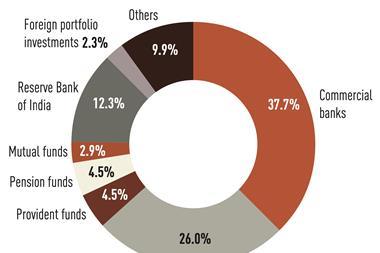June 2007 - Foreign investors have continued to pour billions of dollars into China’s property sector despite the Chinese government’s intensified clampdown on the property market. Significant upside in capital values, attractive rental yields and the expectations for further appreciation of the renminbi are the key forces that lie behind foreign investors’ foray into China’s property market. In 2006, foreign direct investment in China’s real estate sector amounted to $8.2bn, an increase of 52% on the previous year, according to the National Bureau of Statistics. The number of contracts signed by foreign investors to indicate their intended investment in China’s real estate sector also rose dramatically to 2,398 in 2006 from 684 in 2000.
Much of the foreign investment in Chinese property has been through joint ventures and private equity. Such arrangements have been increasingly popular following the government’s policies aimed at restricting land supply and banning offshore companies from purchasing properties on the mainland.
Shanghai, Beijing, Guangzhou and Shenzhen have been widely identified by international property investors as the first-tier cities in China, given their high levels of urbanisation, mature property markets and extensive supply of quality buildings. So far first-tier cities have been the preferred location for foreign investors looking to acquire en-bloc properties for long-term investment, as the stock of quality properties in second-tier cities has remained small. During 2006 Knight Frank identified 44 en-bloc transactions in China’s major cities. And of the 25 en-bloc properties acquired by foreign investors, 23 were located in first-tier cities.
Notwithstanding this, foreign developers have been increasingly shifting their attention towards second-tier cities given the surging land prices and lack of urban land sites in first-tier cities. Of the site transactions involving foreign investment identified by Knight Frank during the first three months of 2007, 14 out of the 29 were located in second-tier cities. According to 2005 official statistics, the numbers of cities on the mainland categorised by their administrative power were as follows:
- four provincial-level cities (or municipalities) that enjoy an autonomy similar to provinces;
- 15 sub-provincial cities that are mostly provincial capitals;
- 268 cities at the prefecture level; and
- 374 cities at the county level.
On the surface, the total number of cities in mainland China amounted to 661 in 2005. However, adding the numbers of these cities together may involve some double counting. This is because the 374 county-level cities are affiliated to the suburbs of other higher-ranking cities. More importantly, most of these county-level cities are relatively underdeveloped, with low per-capita income that has not reached a critical mass of purchasing power that warrants investment attention. We believe that at this stage only the urban areas of the 287 cities at the provincial, sub-provincial and prefecture levels are on the radar screen of international property investors.
Generally speaking, population and per capita income are the two most important indictors for measuring a city’s economic prowess. Among the 287 cities in China, Knight Frank has identified 57 cities with a population of over 1m and per-capita GDP above $3,000. These 57 cities generated 43% of the national GDP in 2005 from 14% of China’s total population. Out of the 57 cities, 14 are located in the Yangtze Delta, nine in Guangdong province and six in Shandong province.
In some under-developed provinces, it is usually only the provincial capitals that have achieved the $3,000 per capita GDP threshold. Examples include Taiyuan, Nanchang and Changsha in the provinces of Shanxi, Jiangxi and Hunan respectively. The provincial capitals tend to be hot spots for foreign developers, but some key cities in inland China, even with rather low per capita income levels, have attracted the interest of Hong Kong developers. One example is Chongqing, where a number of Hong Kong developers have already gained a foothold.
Chongqing’s prospect as an economic hub in western and central China appears bright, with a population level of more than 30m and its designation as a core city by the central government under the Western China Development Strategy. Another example is Guiyang City in Guizhou Province, where New World Group has recently acquired a 1.67m square metre site.
The residential sector has been and will continue to be the focus of foreign developers’ interest in second-tier cities. This is understandable given that the risk involved in this sector is relatively small. Rapid urbanisation in second-tier cities should translate into steady demand for residential units. It is also relatively easy to assess the residential demand in second-tier cities. In addition, many foreign developers prefer residential projects because of their short payback periods - capital can usually be recovered quickly through the pre-sales of properties. However, competition in the residential sector has been intensifying. As China’s construction materials industry is rapidly maturing, the quality gap between foreign and locally-developed properties is narrowing. Local developers have also been catching up fast in acquiring the know-how for developing quality residential schemes, with some having already hired overseas architects, interior designers and landscape designers in an effort to improve standards.
The office sector has so far taken up only a small proportion of foreign developers’ interest in second-tier cities. Demand for grade A office space in China has so far been concentrated in first-tier cities, while demand for quality offices in many second-tier cities currently remains relatively weak. Most enterprises in second-tier cities cannot afford to buy or rent grade A offices, as construction costs are significantly higher compared with the costs of grade B offices or industrial buildings. Nor do these enterprises need the large floor plates offered by grade A offices. According to Knight Frank’s survey in Nanjing in 2006, the average office space demanded by a typical local enterprise was only 150 sq m. Foreign developers are not keen on developing non-grade A offices as this might have a negative impact on their image.
Developing office properties will not be the preference for the big-name foreign developers unless they intend to keep the development for rent or are confident of selling the building en bloc, as the quality of an office building usually declines if it is sold on strata-title basis.
China is on track to become a more service-oriented economy, with production-
supporting services playing a more important role in the value-added chain. These pre-manufacturing and post-manufacturing services include research and development, product design, market research, branding and positioning, marketing and advertising as well as distribution and logistics. Coupled with the continual influx of multinational corporations, this will stimulate the demand for quality offices, in particular in cities that have the potential to become regional service centres. These include Tianjin, Nanjing, Wuhan, Qingdao, Dalian, Chongqing and Chengdu. Over time, the emergence of these regional service centres will create more business opportunities for foreign developers.
However, purchasing power in most second-tier cities is heavily concentrated in the provincial capitals. The branch distribution of a foreign fast food chain provides a good indication of this: of the 10 outlets of Kentucky Fried Chicken (KFC) in Gansu province, nine are situated in its capital city, Lanzhou; 28 out of the 39 KFC outlets in Hubei are in Wuhan, while 17 out of the 25 outlets in Sichuan are located in Chengdu.
Significant resources are required to make a shopping mall successful. Huge investment is needed to buy a site in a prime location, to launch a series of marketing campaigns and to hire a team of professionals to manage the premises. Usually a shopping mall cannot be sold at a good price until its success is proved and this can take several years after project completion.
Second-tier cities will offer more opportunities for foreign property investors in China’s next phase of development. It is easier to find local partners in second-tier cities and their governments are generally more supportive of foreign property investors. Local developers are more affected by credit tightening, giving the financially strong foreign investors a competitive edge. However, the challenges of operating in a second-tier city in the areas of market transparency, policy stability and manpower availability should not be under-estimated. Foreign players might not be able to replicate their successful overseas experiences if they do not have good relationships with the local government and do not have the right people on the ground.


























No comments yet